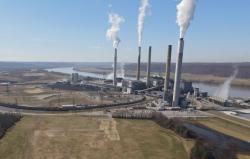
OR WAIT null SECS
© 2024 MJH Life Sciences™ and Turbomachinery Magazine. All rights reserved.
Carbon fibre enclosure reduces LM2500 package noise by 60%
GE Marine Solution has successfully completed the acoustic attenuation and weight comparison testing between its new lightweight composite LM2500 gas turbine module and the steel enclosure. The results verified a 2,500-kilogram weight reduction and a significant improvement in noise attenuation—60% quieter—when compared to its steel predecessor.
“The tests compared the noise and weight of the steel enclosure to the novel one-piece composite design. Results verified that the new carbon fiber provides a significant reduction in the wall weight and noise, which is vital on weight- and size-constrained surface combatants,” said GE’s Brien Bolsinger, Vice President, General Manager, Evendale, Ohio.
“By using lightweight composites, life cycle costs associated with rusting steel components are eliminated. The new design provides improved access to the engine, and with wall temperatures 25 to 50 degrees cooler, there is less heat rejected into the engine room. Yet most importantly, the new module offers sailors a safer, more comfortable environment,” Bolsinger added.
The United States Navy, General Dynamics Bath Iron Works and GE have collaborated on this new LM2500 enclosure. Also as part of this program, digital sensors and components such as transducers, heaters, and flame and ice detectors are being modernized. The first composite enclosure will be ready in 2019; initial applications are on the U.S Navy’s DDG 51 destroyers. A number of other U.S. and international programs are interested in this new enclosure.
The U.S. Navy plans to purchase up to 20 new FFG(X) frigates that are more lethal than the present Littoral Combat Ships. GE believes its LM2500 family of proven marine gas turbines are the right size to power this new frigate program. With a GE gas turbine, the U.S. Navy has support worldwide whether onshore or at sea, and interoperability benefits with other U.S. Navy vessels and allies. GE has delivered gas turbines onboard 646 naval ships serving 35 navies worldwide, and provides 97% of the commissioned propulsion gas turbines in the U.S. Navy fleet.



